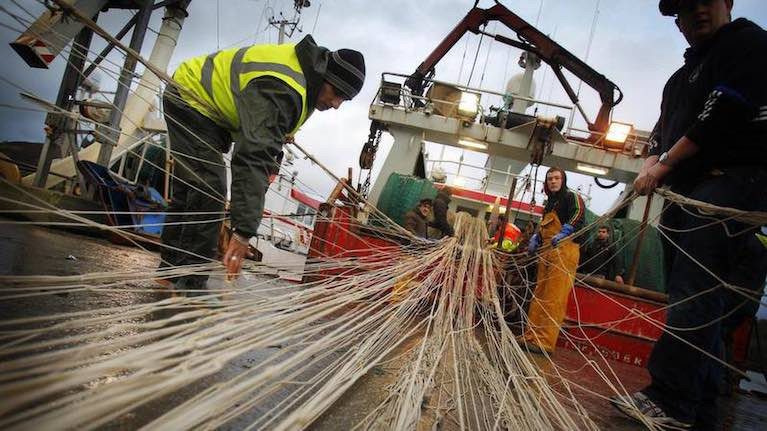Sinn Féin has criticised the Government’s handling of a seven-year-old agreement with Britain on Rockall after an Irish fishing vessel was inspected by a Scottish patrol earlier this week.
Sinn Féin fisheries and marine spokesman Pádraig MacLochlainn was reacting to a claim by the Donegal-based Northern Celt that it was told by Scottish authorities on Monday that it could not fish within 12 miles of Rockall.
Skipper Adrian McClenaghan said he had a permit to continue to fish within British waters.
Mr MacLochlainn said he had warned the then Irish marine minister Michael Creed in 2019 that a 2013 agreement between the Irish and British governments establishing a Single Maritime Boundary between the Exclusive Economic Zones (EEZs) of the two countries and parts of their Continental Shelves, “essentially recognised British sovereignty over Rockall”.
 Padraig MacLochlainn, Sinn Fein spokesman on the Marine
Padraig MacLochlainn, Sinn Fein spokesman on the Marine
“This is a shameful agreement that has never been ratified by the Dáil,” Mr MacLochlainn said.
Ireland “could have supported the governments of Iceland and Denmark in demanding shared sovereignty and fishing rights around Rockall but chose not to do so”, he said.
He said that Minister for Foreign Affairs Simon Coveney and his Fine Gael party had “created this mess” and “need to sort it out”.
The 2013 agreement was signed on Ireland’s behalf by then Tánaiste and foreign affairs minister Eamon Gilmore.
The Irish government maintains that Rockall, as an uninhabited rock, does not have an EEZ under Article 121 of the UN Convention on the Law of the Sea.
However, when the issue flared up last in mid-2019, two Irish maritime lawyers disagreed.
Rockall expert Prof Clive Symmons of Trinity College, Dublin and Prof Ronán Long, who is ocean governance and law of the sea chair at the World Maritime University, both stated that rocks can generate 12-mile territorial sea limits under the same UN convention.
The Department of Foreign Affairs has said it is aware of “contact between an Irish fishing vessel and a Marine Scotland patrol vessel” and has been in contact with the Scottish and UK authorities.
A Scottish government spokesperson said: “One Irish vessel was routinely inspected outside of territorial waters around Rockall”
"The master requested clarification on the access rights granted by his licence to fish in UK waters,” it said.
The KFO fears the renewal of tensions over Rockall may jeopardise the seasonal non-quota squid fishery for Irish vessels.
Up to 30 per cent of whitefish, including haddock, caught by Killybegs and Greencastle vessels is taken around Rockall.






























































